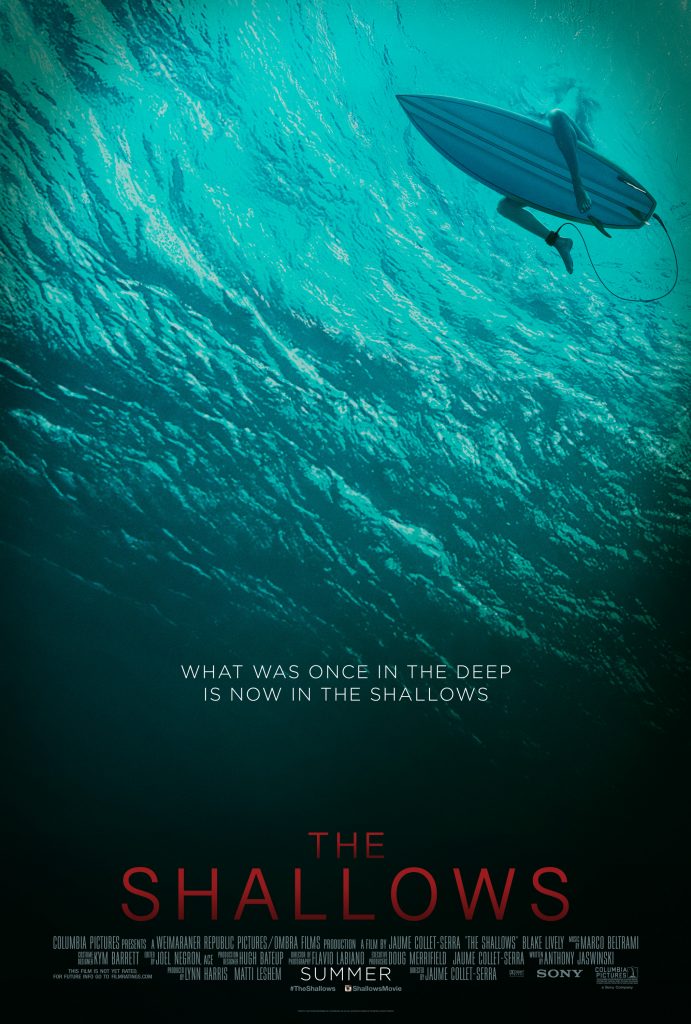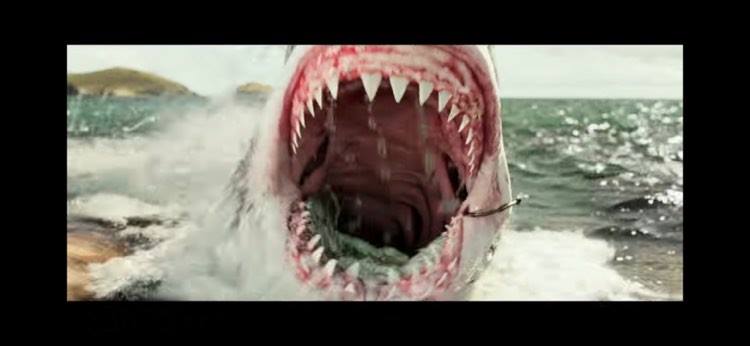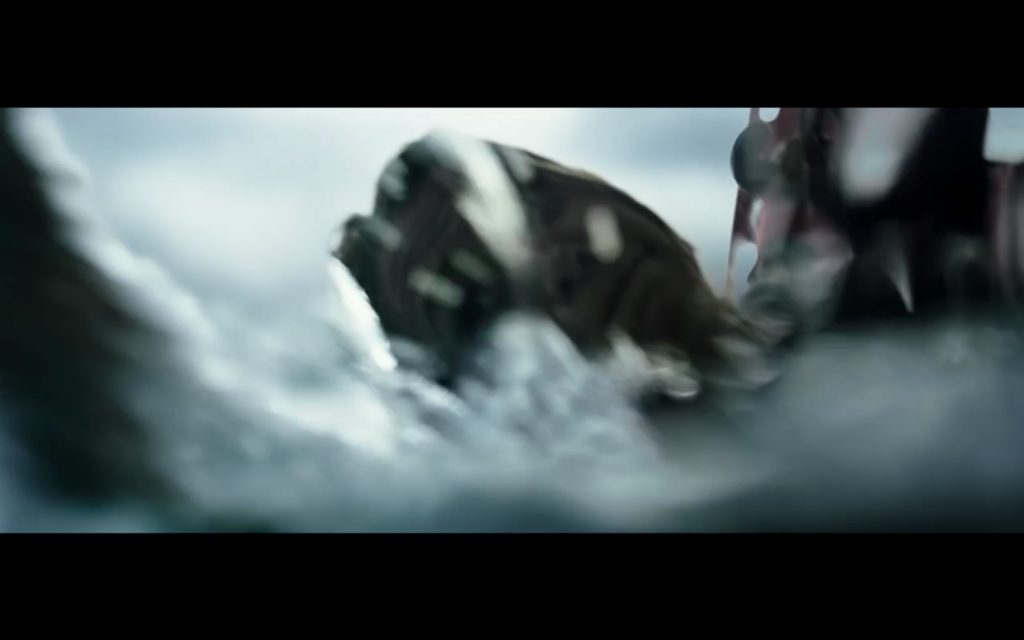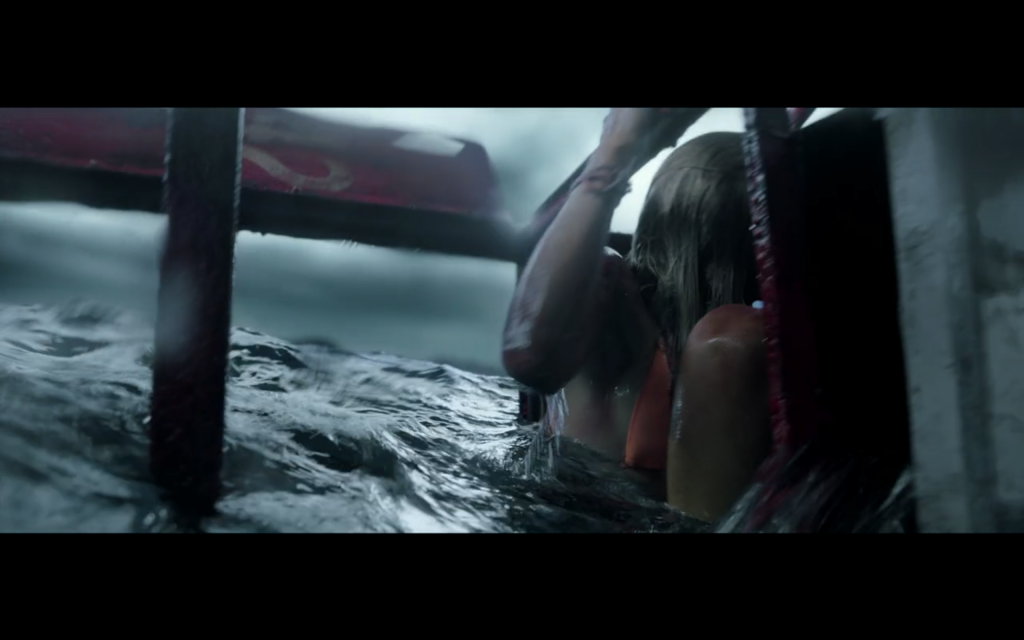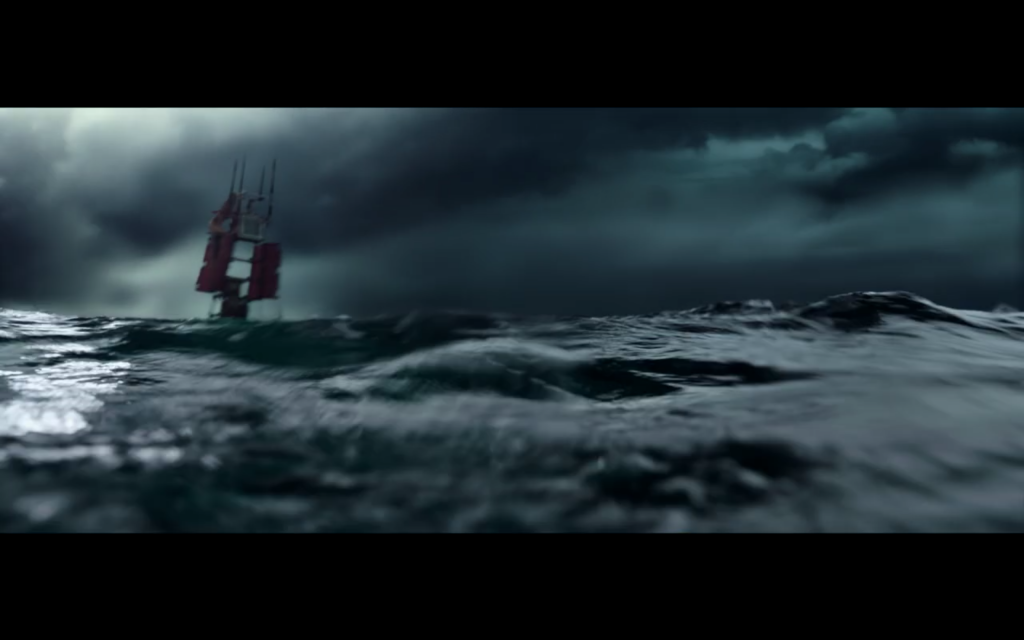The Shallows uses the tale of Nancy (Blake Lively), a surfer alone and vulnerable in the picturesque coasts of Mexico only to be aggressively hunted by a great white shark with a taste for skinny blonde models (shock). Since Jaws, sharks have become a symbol of fear – an immediate indication of danger within the cinematic world. There is a distinct lack of camera shots that capture the shark in its entirety. The Shallows works to create apprehension around the shark by not showing it to the audience.
Within this suspense, the film focuses on the battle between human and ocean. The shark, being an inhabitant of the ocean, makes the audience equate the ocean with danger. It is intriguing to think of this movie as a revenge story; the ocean, and by extension, the shark, striking against humanity as intruders in a land where they do not belong. The film provides a small nod towards this theory when the shark attacks Nancy on the rocks. As the shark emerges from the water, jaws wide, a large fishing hook wedged into the side of its mouth. Nancy comments to herself; “Someone got you.” The hook is a symbolic reference to the damage of humanity upon the sea and its inhabitants, for commercial gain. Often, sharks in shark films are unusually cognitive of their behaviour, as exemplified here. In the Shallows, this shark consciously attacks humans as a form of revenge. This adds a new layer to the suspense of the film. Due to the shark’s high intelligence, Nancy and the viewer now contend with an elevated threat level.
The central conflict this film presents is human versus shark, and in the penultimate moments of the film, Nancy decides to fight the shark head-on. The scene begins with Nancy desperately trying to signal a passing ship with a flare gun. Dropping the bullets into the ocean, she is captured dramatically thrusting the top half of her body into the ocean to retrieve them. The water itself is dark, the sky brooding, a cool cast over all the action. It is dark, bleak and unrelenting. The mise-en-scene of these shots is relatively empty, only Nancy, the shark and the expanse of water. The entire ensemble creates the effect of utter hopelessness. Altogether, this works to increase the suspense and the conflict between human and shark. We see the camera bounce between the surface world and beneath the waves in a series of shots. The water is dark and violent, fighting against Nancy as she attempts evasion.
These shots propel the action towards its peak. The camera is low, water level, bouncing above and beneath the waves. We see Nancy above the surface, grasping at safety, and we see her in foreign territory beneath the water. The slow-motion of these shots and the agonised expression on Lively’s face prolong the suspense and torment. These shots look painful, and the ocean is foreign and an unliveable place for a human. Both the attacking shark and the violent ocean seems as if it is rejecting humankind. The composition of these shots not only aid suspense but add to the message of human versus shark. This bleakness is a visual metaphor, saying that the two adversaries’ battle is a dark one. That the ocean, and by extension, the ocean’s creature, can fight back.
